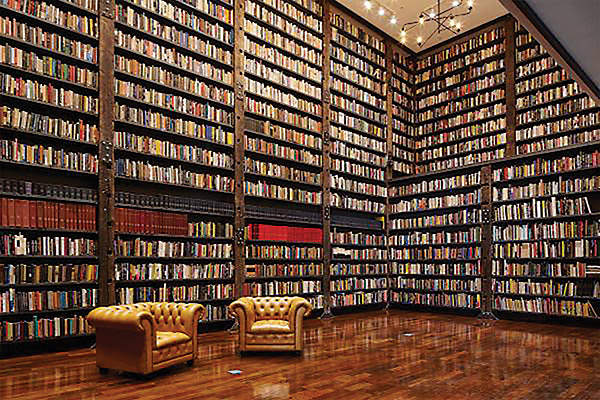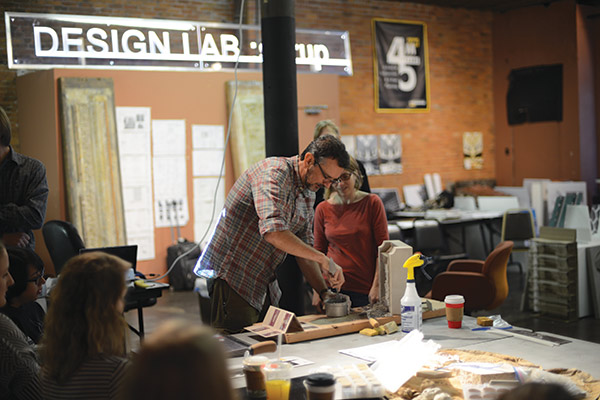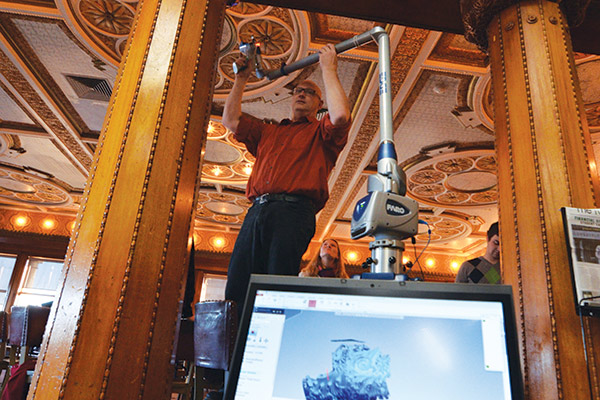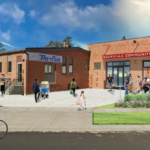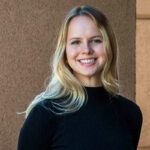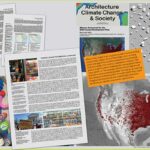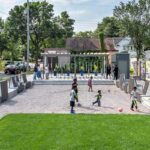Year in Review 2016-17
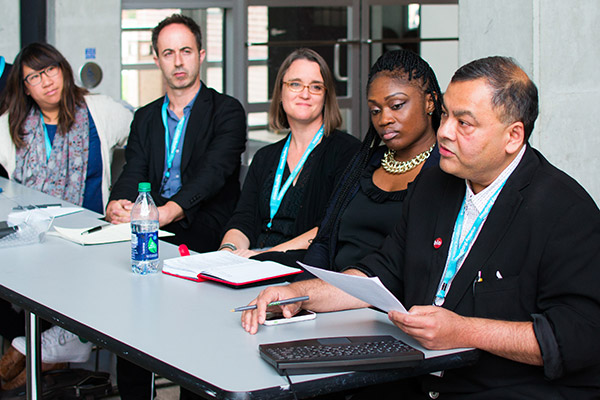
Professor Arijit Sen speaks at A New Voice for Publicly Engaged Design Education
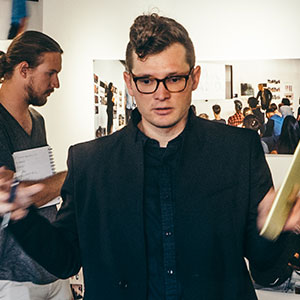
This fall the Department of Architecture welcomed Assistant Professor Alex Timmer to the faculty. Most recently he served as the inaugural Irving Innovation Fellow at Harvard University’s Graduate School of Design where he pursued research on fabrication and energy systems. With degrees from Harvard and University of Michigan, Alex Timmer will bring his expertise to classes on architectural technology and design. Welcome to Milwaukee Alex!
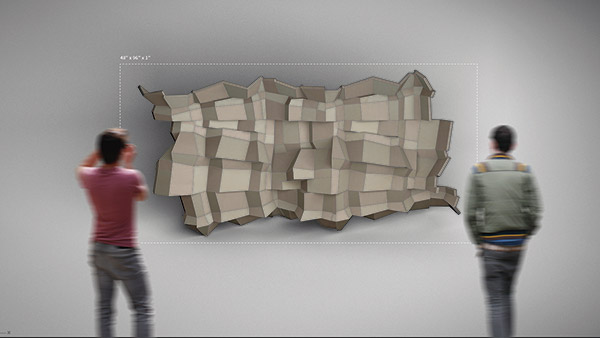
Brian was the principal investigator with co-recipients including SARUP alumni: Jan van den Kieboom, Nicholas Robinson, and Sweta Meier.
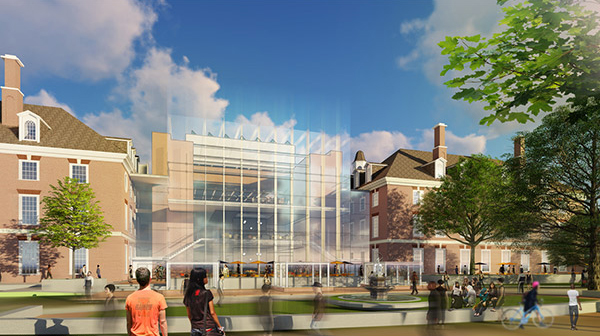
http://www.arpajournal.net/instrumentsofservice/
Listen to the “Night White Skies” interview that covers Tejchman’s Graham Grant research and ongoing work here: http://www.nightwhiteskies.com/#home-section.
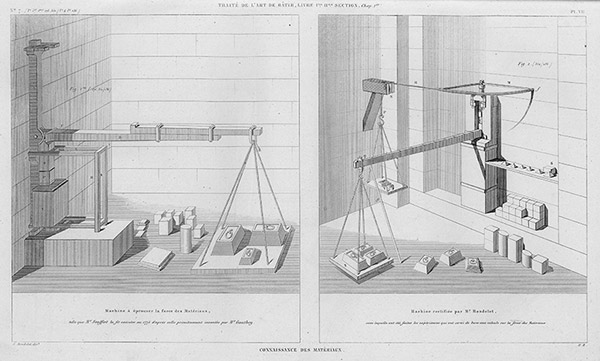
Working with Associate Professor Jim Shields, FAIA, the Masonry Partners of Wisconsin continued to fund the 410 Masonry Studio during the Fall of 2016, providing guest lecturers (Johnsen Schmaling Architects, Doug Kozel Architect, DIGSAU Architects), guest critics, and masonry materials for students to work with in studio. The studio also held a masonry day in fall during which three student teams worked with professional masons to construct full-size masonry project mock-ups during the course of a single day. Many students got experience in laying brick for the first time.
In August, Associate Professor Greg Thomson left Milwaukee for exciting new opportunities in Berkeley, California. Greg was a key faculty member for UWM’s Solar Decathlon house and part of the Center for Ecological Design. His research in sustainable architecture added an important perspective to both the curriculum. Good luck Greg!
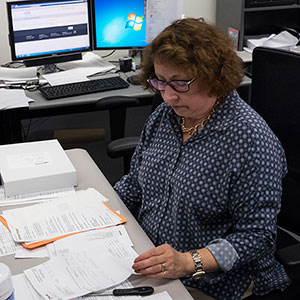
Congratulations
to Dee Nordgren on her retirement!
Year in Review 2015-16
In the fall of 2015, Layla Qarout (PhD candidate) presented a paper (along with her advisor, Associate Professor Michael Utzinger) at the Passive and Low Energy Architecture (PLEA) con-ference in Bologna, Italy. The paper was “Reducing Environmental Impacts of Building Structures through Local Material Sourcing.”
In December of 2015, Zhe Kong (PhD candidate) presented a paper (also along with Michael Utzinger) at the Building Simulation 2015 Conference in Hyderabad, India. The paper was “Solving Glare Problems in Architecture through Integration of HDR Image Technique and Modeling with DIVA.” (The paper was co-authored with Michael Utzinger and Lei Liu).
At the annual meeting of the Vernacular Architecture Forum in Durham, North Carolina, this year, there were two papers from SARUP PhD students: Yuko Nakamura presented a paper on “The Gendered Landscapes of Higher Education: Interpreting the Campuses of Women’s Specialized Schools in Pre-WWII Tokyo, Japan as ‘Negotiated Space.’” Hongyan Yang presented a paper on “How Race Produces and Reproduces Homes: The Everyday Culinary Negotiations of Hmong Immigrants in Milwaukee, Wisconsin.” Hongyan received the Pamela H. Simpson Presenter’s Fellowships to attend the conference.
Royce Earnest (PhD candidate) presented a paper on Saarinen’s War Memorial Building and mid-century discourse at the Construction History Society of America’s Biennial meeting in Aus-tin, Texas. At the same meeting, Marisa Gomez (PhD candidate in the Madison Art History De-partment, which is associated with Milwaukee’s Buildings-Landscapes-Cultures program) presented a paper on “Factory Made Houses in Post-war America.” Royce also presented part of his dissertation research at the graduate student writing session at the American Society of Environmental Historians annual conference in Seattle.
Sahar Hosseini (PhD Candidate) received a nine-month research fellowship at the Humanities Institute at the New York Botanical Garden. The program is funded by the Andrew Mellon Foundation to promote discourse among scholars at the interface of art and science.
Recent graduate Caitlin Boyle Moriarty has been named Director of Architectural History for Preservation Studios, a full-service historic preservation consulting firm in Buffalo, New York.
Recent graduate Sara Khorshidifard is now an assistant professor in the College of Technology, Architecture, and Applied Engineering at Bowling Green State University in Ohio.
The PhD students are looking for further opportunities to connect student research to professional practice. This spring, SARUP Dean Bob Greenstreet distributed a summary of PhD research areas to local firms to build connections and identify more opportunities for collaboration.
1) encourage community-based learning and collaboration,
2) collect local histories of places of cultural relevance
3) gain skills that allow professionals to collect and analyze data
4) use the power of digital humanities to disseminate research data and
5) empower local communities by hearing/responding to those voices that are often not heard in urban and official discourses.
The inaugural Design Lab SARUP (DLS) began an outreach, innovations laboratory in downtown Chicago. The lab was created to provide a space for the advancement of architectural education for undergraduate and graduate students. The studio location in Chicago was selected to offer students hands-on experiences of important heritage and contemporary building developments. Collaboration in the laboratory was led by students in the Historic Preservation Studio and the IP_BIM Studio.
The intent of the lab was to merge the curriculum studies of the Historic Preservation program with the advanced software and technology studies of the IP_BIM studio. Anticipating the movement toward environmental sustainability and reuse of our great heritage places, the lab offered insights into a new dynamic in the professional office. Students were challenged to understand technical and intentional realities of historic fabric by using advanced laser scanning technologies, new investigative techniques and tools, sophisticated software modeling programs, and interaction with professional designers and contractors.
The laboratory began its inaugural season in fall 2015 with a four week field operation during October at the John David Mooney Foundation at 114 West Kinzie Street.
The timing of laboratory activities coincided with the citywide events of the Chicago Biennial, a unique, three- month celebration of Chicago’s great architecture focused on “The State of the Art of Architecture.” As international architects, artists, and design professionals converged on Chicago through a series of lectures, workshops, and exhibits, the DLS students were able to choose from a long list of unique design activities. The lab itself, directed by Adjunct Associate Professor Matt Jarosz in collaboration with Marit Gamberg, HPI Research Assistant and Associate Professor Gil Snyder, was the location of a series of lectures and workshops focused on heritage building technologies, including mass timber and stone, laser scanning, and design proposals for historic restorations and building additions.
UWM Alumnus Dan Wilhelms, ’81, has given one of the largest philanthropic gifts in the School of Architecture & Urban Planning’s recent history. The gift of $91,000 will contribute to the purchase an advanced hand-held laser scanning probe and comprehensive reverse engineering software.
